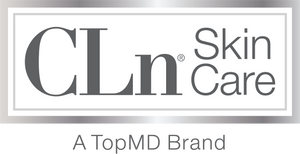
If you’ve ever worn a bikini, then chances are you’re familiar with the common annoyance of razor bumps (also known as ingrown hairs or folliculitis). Unfortunately, those pesky bumps are more than just unsightly; they can also increase your risk of harmful infections and lingering red skin bumps. That said, when preparing for bikini season, it’s in your best interests to know how to avoid and manage razor bumps to ensure you have a happy swim season.
What Exactly Are Razor Bumps (Folliculitis and Ingrown Hairs)?
Before we dive into how to avoid razor bumps, it helps to know a bit about what they are and where they come from.
The clinical name for razor bumps is folliculitis. In a nutshell, folliculitis is an inflammation and infection of your hair follicles. This condition can sprout up on any part of your body that has hair, but it’s most common to those areas that experience a lot of friction from rubbing, clothing, or your razor, so you’ll often see it on the face and scalp, as well as the thigh and groin area AKA your bikini line.
Folliculitis begins when your hair follicles are blocked or irritated by sweat, oils, and makeup, and, in the case of your bikini line, the combination of shaving and wearing tight bathing suits. Basically, if your hair follicles are compromised in any way, then bacteria, yeast, and fungus can make its way in and result in folliculitis.
1. Exfoliate Regularly
Regular exfoliation is a killer defense against razor bumps and ingrown hairs because it sloughs off dead skin cells and all of the infection-causing gunk that comes with them. But what a lot of people don’t realize is that using a loofah or dry brush isn’t your best exfoliation technique; in fact, doing so can even damage or irritate skin, especially sensitive skin types.
Rather than scrub away at your body, use a gentle chemical exfoliant instead (which is not nearly as scary as it sounds). A quality cleanser that contains salicylic acid (a common acne treatment) is a great exfoliant as it will slough off those dead skin cells without irritating the skin.
2. Cleanse Often
Take care to cleanse before and after shaving as well as within an hour of any rigorous physical activity.
3. Use Proper Shaving Techniques
The method and tools you use to shave can also play a big part in avoiding folliculitis. For starters, start out with clean skin and a clean tools. Moreover, shaving with a dull blade can irritate the skin further, so be sure to use a sharp one and never share razors with someone else.
Additionally, make sure to shave in the same direction that your hair grows, rather than against it. Finally, applying a cool washcloth post-shave can help to sooth the skin and reduce irritation.
The post 3 Steps to Avoid Razor Bumps and Folliculitis on Your Bikini Line appeared first on CLn® Skin Care Blog.
Disclaimer: Unless otherwise explicitly stated, the content on this blog, including all articles, videos, and other information, is for
general informational purposes only and is not intended to be a substitute for professional medical advice,
diagnosis, or treatment. Always seek the advice of your physician or another qualified health provider with any
questions you may have regarding a medical condition or treatment and before undertaking a new health care regimen.
Never disregard professional medical advice or delay in seeking it because of something you have read on this website.
The views expressed on this blog and website have no relation to those of any academic, hospital, health practice,
or other institution.
